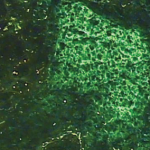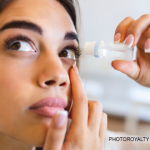Treatment
Treatment goals for Sjögren’s syndrome in childhood is to prevent progression of the disease, decrease pain and enable typical growth and development. Currently, there is no literature about the efficacy of medication to slow disease progression in childhood Sjögren’s syndrome.
The most common medication used is hydroxychloroquine, which is possibly beneficial in children and has minimal side effects. In adults, a decrease in extraglandular symptoms seems to occur in patients treated with hydroxychloroquine.7 No large studies have been completed with children.
During acute exacerbations of parotitis, short courses of oral or intravenous steroids can aid in symptomatic management. Sialagogues have also been used to help increase salivary flow during acute flares of parotitis. Methotrexate and hydroxychloroquine have been used in an attempt to prevent recurrent flares of parotitis.
Multiple immunomodulatory agents, including abatacept, rituximab, mycophenolate mofetil, azathioprine, belimumab and tumor necrosis factor inhibitors, have been used to treat specific extraglandular symptoms in children with Sjögren’s syndrome.
Another vital aspect of children’s care is their oral and ocular health. Children should be referred to oral and ocular healthcare providers. Their dental exams should include frequent cleanings and fluoride treatments (every three to six months). Sicca symptoms may be alleviated with stimulants (e.g., sugar-free gum or sugar-free sour candies) to increase saliva secretion or with saliva replacements. Nonselective muscarinic agonists, such as pilocarpine, have also been tried in severe cases of pediatric sicca.
Yearly ocular exams should be performed, monitoring conjunctival and corneal changes from chronic dryness and/or ocular inflammation. Artificial tears are commonly used for symptomatic relief in children suffering symptoms of dry eyes. For children who have evidence of ocular damage from keratoconjunctivitis sicca, topical anti-inflammatory agents may be beneficial.
Due to the complexity of treating these children, a multidisciplinary team is often needed.
Prognosis
Long-term studies of individuals diagnosed with Sjögren’s syndrome during childhood have not been performed. Based on our collective clinical experience, we expect childhood Sjögren’s syndrome will progress over time to exhibit classic sicca symptoms common in adults. Some children develop exocrine gland dysfunction and sicca symptoms during childhood. However, for those who do not, the timing of progression may be years or decades.
While extra-glandular manifestations may be more common in childhood Sjögren’s syndrome, quality of life in adults is more associated with dryness, pain and fatigue.12
Adults with Sjögren’s syndrome are at increased risk for developing lymphoma. Although lymphoma development has been reported in some children with Sjögren’s syndrome, whether the risk is similar to or greater than that in adults is not yet known.13,14

